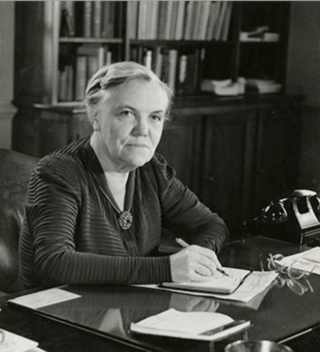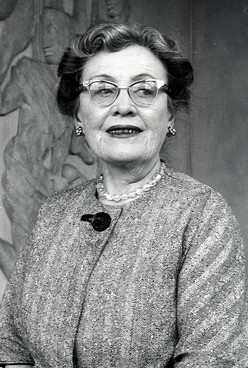Related Research Articles

Vitamins are organic molecules that are essential to an organism in small quantities for proper metabolic function. Essential nutrients cannot be synthesized in the organism in sufficient quantities for survival, and therefore must be obtained through the diet. For example, Vitamin C can be synthesized by some species but not by others; it is not considered a vitamin in the first instance but is in the second. Most vitamins are not single molecules, but groups of related molecules called vitamers. For example, there are eight vitamers of vitamin E: four tocopherols and four tocotrienols.
A nutrient is a substance used by an organism to survive, grow, and reproduce. The requirement for dietary nutrient intake applies to animals, plants, fungi, and protists. Nutrients can be incorporated into cells for metabolic purposes or excreted by cells to create non-cellular structures, such as hair, scales, feathers, or exoskeletons. Some nutrients can be metabolically converted to smaller molecules in the process of releasing energy, such as for carbohydrates, lipids, proteins, and fermentation products, leading to end-products of water and carbon dioxide. All organisms require water. Essential nutrients for animals are the energy sources, some of the amino acids that are combined to create proteins, a subset of fatty acids, vitamins and certain minerals. Plants require more diverse minerals absorbed through roots, plus carbon dioxide and oxygen absorbed through leaves. Fungi live on dead or living organic matter and meet nutrient needs from their host.

Antonia Coello Novello is a Puerto Rican physician and public health administrator. She was a vice admiral in the Public Health Service Commissioned Corps and served as 14th Surgeon General of the United States from 1990 to 1993. Novello was the first woman and first Hispanic to serve as Surgeon General. Novello also served as Commissioner of Health for the State of New York from 1999 to 2006. Novello has received numerous awards including more than fifty honorary degrees, was elected to the National Academy of Medicine in 2000, and has been inducted into the National Women's Hall of Fame.
In the U.S. and Canada, the Reference Daily Intake (RDI) is used in nutrition labeling on food and dietary supplement products to indicate the daily intake level of a nutrient that is considered to be sufficient to meet the requirements of 97–98% of healthy individuals in every demographic in the United States. While developed for the US population, it has been adopted by other countries, though not universally.
The Dietary Reference Intake (DRI) is a system of nutrition recommendations from the National Academy of Medicine (NAM) of the National Academies. It was introduced in 1997 in order to broaden the existing guidelines known as Recommended Dietary Allowances. The DRI values differ from those used in nutrition labeling on food and dietary supplement products in the U.S. and Canada, which uses Reference Daily Intakes (RDIs) and Daily Values (%DV) which were based on outdated RDAs from 1968 but were updated as of 2016.

Fluoride or fluorine deficiency is a disorder which may cause increased dental caries and possibly osteoporosis, due to a lack of fluoride in diet. Common dietary sources of fluoride include tea, grape juice, wine, raisins, some seafood, coffee, and tap water that has been fluoridated. The extent to which the condition truly exists, and its relationship to fluoride poisoning has given rise to some controversy. Fluorine is not considered to be an essential nutrient, but the importance of fluorides for preventing tooth decay is well-recognized, despite the effect is predominantly topical. Prior to 1981, the effect of fluorides was thought to be largely systemic and preeruptive, requiring ingestion. Fluoride is considered essential in the development and maintenance of teeth by the American Dental Hygienists' Association. Fluoride incorporates into the teeth to form and harden teeth enamels. This makes the teeth more acid resistant, as well as more resistant to cavity forming bacteria. Caries-inhibiting effects of fluoride were first noticed 1902, when fluoride in high concentrations was found to stain teeth and prevent tooth decay.
Megavitamin therapy is the use of large doses of vitamins, often many times greater than the recommended dietary allowance (RDA) in the attempt to prevent or treat diseases. Megavitamin therapy is typically used in alternative medicine by practitioners who call their approach orthomolecular medicine. Vitamins are useful in preventing and treating illnesses specifically associated with dietary vitamin shortfalls, but the conclusions of medical research are that the broad claims of disease treatment by advocates of megavitamin therapy are unsubstantiated by the available evidence. It is generally accepted that doses of any vitamin greatly in excess of nutritional requirements will result either in toxicity or in the excess simply being metabolised; thus evidence in favour of vitamin supplementation supports only doses in the normal range. Critics have described some aspects of orthomolecular medicine as food faddism or even quackery. Research on nutrient supplementation in general suggests that some nutritional supplements might be beneficial, and that others might be harmful; several specific nutritional therapies are associated with an increased likelihood of the condition they are meant to prevent.

Hazel Katherine Stiebeling (1896–1989) was an American nutritionist who pioneered the development of USDA programs for nutrition including USDA daily dietary allowances of vitamins and minerals.
The School Meals Initiative for Healthy Children (SMI) was an initiative established by the United States Department of Agriculture in 1994 to revise and update nutrition standards for school meals and require them comply with the Dietary Guidelines for Americans for children over age two. The SMI required school meals to:

Katharine Blunt was an American chemist, professor, and nutritionist who specialized in the fields of home economics, food chemistry and nutrition. Most of her research was on nutrition, but she also made great improvements to research on calcium and phosphorus metabolism and on the basal metabolism of women and children. She served as the third president of Connecticut College.
Icie Gertrude Macy Hoobler was an American biochemist who did research in human nutrition, specifically pertaining to mothers and children. Despite facing discrimination because of her gender, she became the first woman chair of a local section of the American Chemical Society and won 22 awards and honors for her laboratory's research.

Glenola Emily Behling Rose was an American chemist known for her work during the 1920s and 1930s on women's employment in chemistry. She ran the Women's Service Committee of the American Chemical Society, which she co-founded in 1926.

Cecile Hoover Edwards was an American nutritional researcher whose career focused on improving the nutrition and well-being of disadvantaged people. Her scientific focus was on finding low-cost foods with an optimal amino acid composition, with a special interest in methionine metabolism. She was also a university administrator, serving as dean of several schools within Howard University between 1974 and 1990.

Doris Calloway, née Howes was an American nutritionist noted for her studies of human metabolism, role in public health, and food preservation and safety.

Agnes Fay Morgan was an American chemist and academic. She was the longtime chair of the home economics program at the University of California. Her program was strongly grounded in science, and students admitted into the program were required to have a level of science education that was not typical of home economics programs at the time. Morgan was one of the earliest married female college professors in the United States.

Helen Swift Mitchell was an American biochemist and nutritionist. She was the research director at the Battle Creek Sanitarium, and taught courses in nutrition at Battle Creek College and University of Massachusetts and later became an exchange professor at Hokkaido University in Japan. During World War II, she was part of government committees that did research on nutrition and was critical of fad diets that came about during that time. She did research on and published works about the dietary conditions of rats, and later co-authored the textbook Nutrition in Health and Disease.

Constance Virginia Kies was an American nutrition scientist and dietitian. Kies worked as a public school teacher for three years before going against the traditional gender norms of her time and completing an M.S. and Ph.D. from the University of Wisconsin–Madison. Over the duration of her 30-year career at the University of Nebraska–Lincoln, Kies researched nutritional biochemistry. She demonstrated relationships between minerals, proteins, and dietary fiber through pioneering human subject research. Her findings led to advancements in human knowledge of copper and protein metabolism. She was honored with the Borden Award and was a fellow of the American College of Nutrition. Kies was a feminist and a member of the National Organization for Women and the Women's Equity Action League. She died of uterine cancer three months after her diagnosis.

Mary deGarmo Bryan was an American dietician and professor at Columbia University and served as the second president of the American Dietetic Association (ADA). She helped pioneer the federal school National Lunch Program in the United States and also served as an editor and nutrition adviser.
Maret Gillett Traber is an American research biochemist. She is the Ava Helen Pauling Professor at the Linus Pauling Institute at Oregon State University.

Edna Noble White was an American educator. She was director of the Merrill-Palmer Institute in Detroit from 1919 to 1947, and president of the American Home Economics Association from 1918 to 1920. She was inducted into the Michigan Women's Hall of Fame in 1993.
References
- 1 2 Wayne, Tiffany K. (2011). American Women of Science Since 1900: Essays A-H. Vol.1. ABC-CLIO. pp. 807–808. ISBN 978-1598841589 . Retrieved 3 February 2015.
- 1 2 Sicherman, Barbara (1980). Notable American Women: The Modern Period : a Biographical Dictionary . Google Books: Harvard University Press. pp. 580–581. ISBN 0674627334.
- 1 2 3 Lydia Roberts 1879-1965
- 1 2 3 4 Harper, Alfred E. (2003-11-01). "Contributions of Women Scientists in the U.S. to the Development of Recommended Dietary Allowances". The Journal of Nutrition. 133 (11): 3698–3702. doi: 10.1093/jn/133.11.3698 . ISSN 0022-3166. PMID 14608098.
- 1 2 3 4 5 6 Ogilvie, Marilyn; Harvey, Joy (2003-12-16). The Biographical Dictionary of Women in Science: Pioneering Lives From Ancient Times to the Mid-20th Century. Routledge. ISBN 9781135963439.
- 1 2 Jack, Jordynn (2009-01-01). Science on the Home Front: American Women Scientists in World War II. University of Illinois Press. ISBN 9780252076596.
- 1 2 3 Ohles, Frederik; Ohles, Shirley M.; Ramsay, John G. (1997-01-01). Biographical Dictionary of Modern American Educators . Greenwood Publishing Group. p. 275. ISBN 9780313291333.
lydia roberts biographical dictionary of modern american educators.
- Wayne, T.K. (2011). American Women of Science Since 1900: Essays A-H. Vol.1. ABC-CLIO. p. 807. ISBN 9781598841589 . Retrieved 3 February 2015.